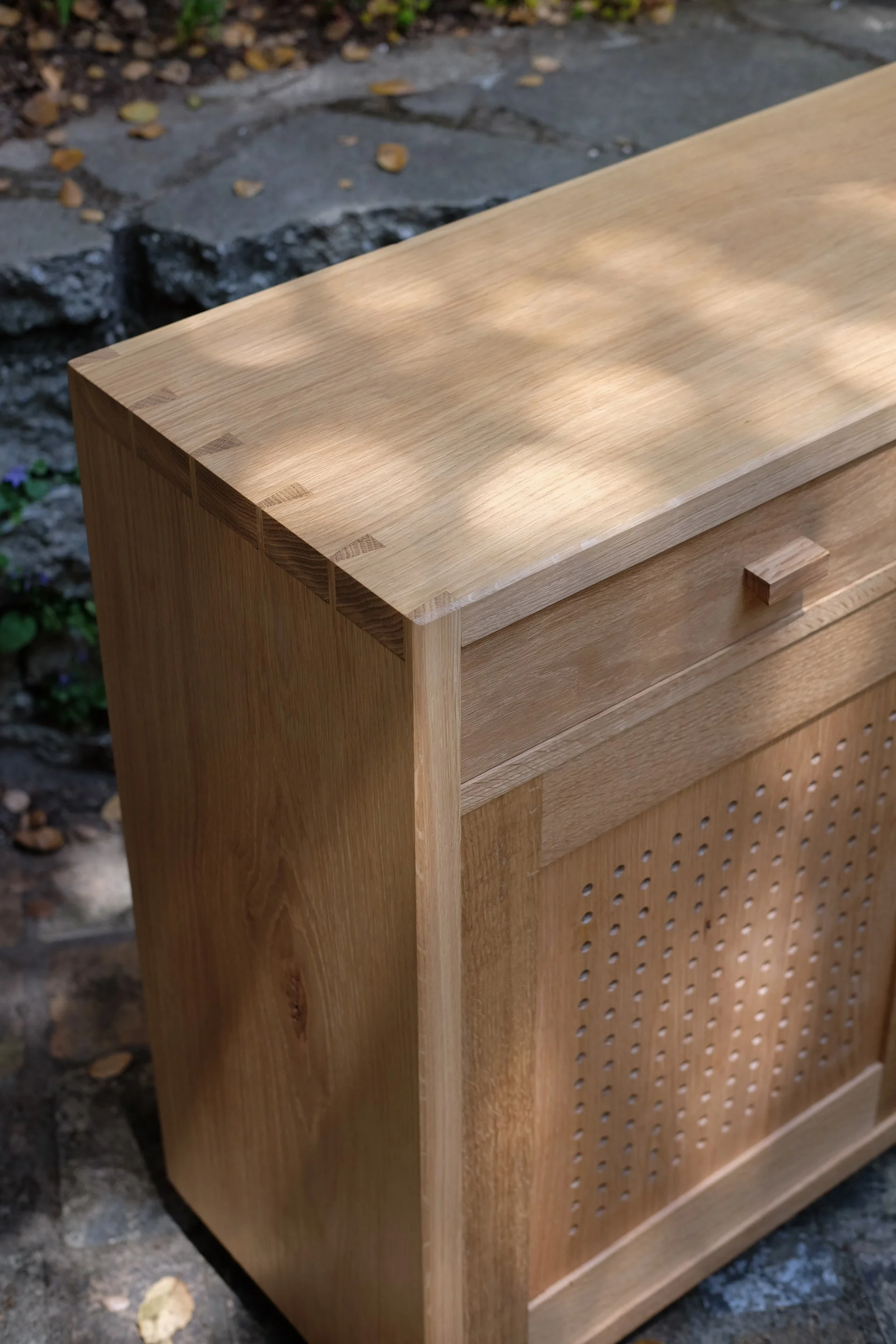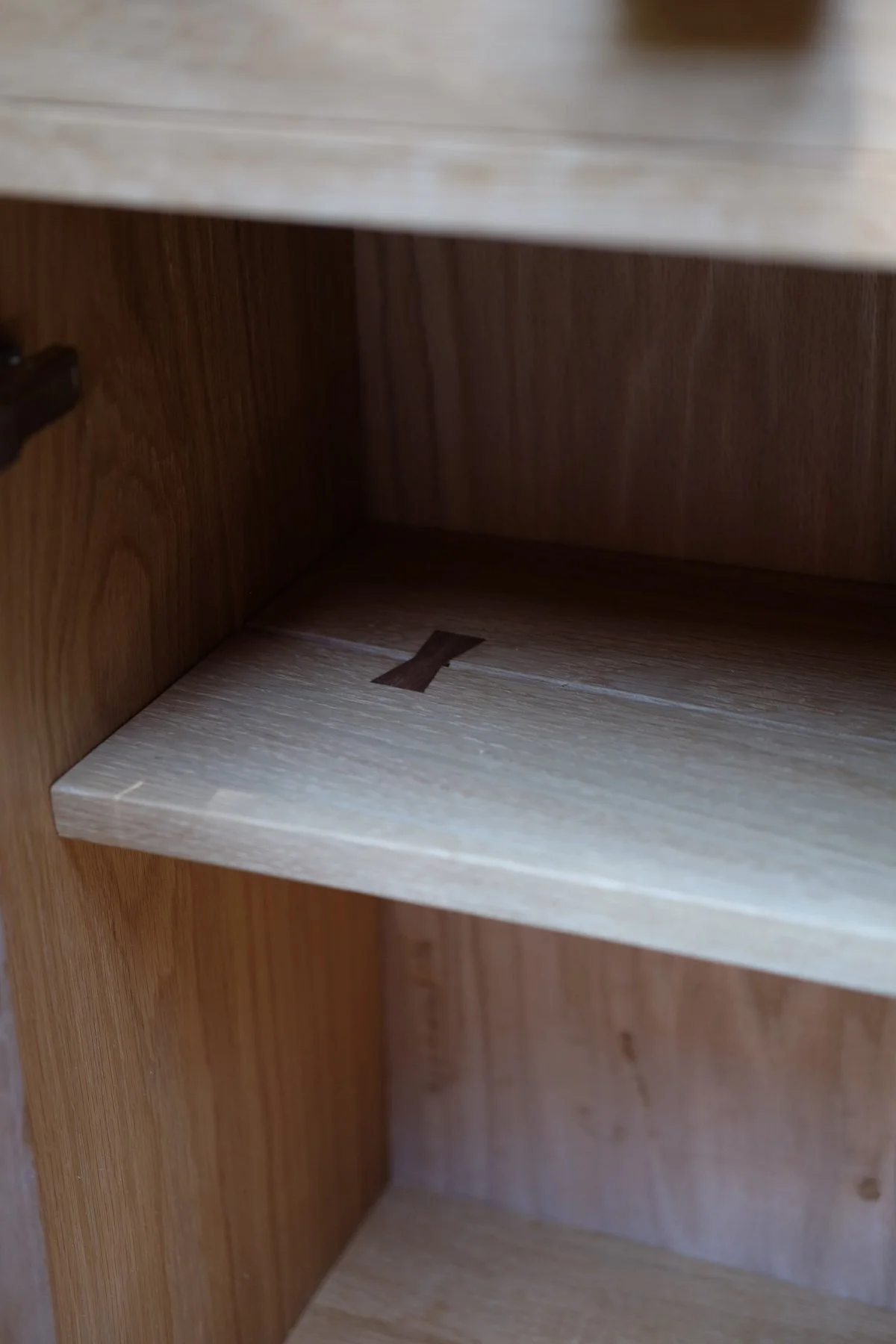Mail Cabinet
I like building cabinets because in most cases their destiny is a fairly modest one. A chair can be a throne and a dining table is the center of your home, but a cabinet is really just a place for you to dump your stuff. It’s significance comes directly from its intended use. I know a lot of people who have uncomfortable chairs that you can’t really sit in, but I don’t know a single person who owns a cabinet that doesn’t hold anything. Even James Krenov put silverware and little figurines in his.
Part of that is human nature. Generally speaking, we adapt to whatever size fish bowl we live in. Every apartment or house I’ve moved into in the last 10 years has been a little bit bigger than the place before, and every time I start out wondering how we’re ever going to fill the new place up. Fast forward 6 months and it feels like it’s bursting at the seams. I’ve accepted this and no longer torture myself with fantasies of getting rid of everything we own. Instead I now fantasize about storage.
This cabinet was commissioned by my sister, who was in desperate need of a place to hide all of the packages that come and go from her house each week. I love a straightforward prompt like this because in my experience, clarity of purpose leads to efficient design. In this case, when I say efficient, what I mean is good. It needed two drawers for mail, a removable shelf, and a big empty space for boxes.
Once we finalized the specs (60” x 14” x 32”), I immediately started to dig through my little wood shed in search of a wide piece of oak that I knew had been sitting around for a long time. I implemented a policy a couple of years ago that whenever I come across a clear piece of oak or cherry that’s wider than 12”, I buy it. Even if I don’t need it at that moment. This policy has yet to fail me.
To be able to build a big cabinet from a single piece of timber rather than a bunch of boards laminated together is a tremendous luxury, but there are certain drawbacks and considerations. The first is that I would need to dimension the pieces by hand because they were too wide for my planer. Laborious but straightforward with a handplane. The second is that I would need to cut the joinery with some expediency, because wide boards have a tendency to move on you. The less time between when you cut and fit the dovetails on a wide case piece, and assemble it, the better chance you’ll have of it all going smoothly.
Once I figured out a body position that would work for me to saw such a long piece of timber - me squatting with my saw held vertically and the board lying flat on my bench for those wondering - it was a relatively smooth operation. Getting the joinery to fit on thicker boards is always a little bit of a pain but I took it slow and steady and eventually got it halfway decent.
I try to be careful when it comes to any self-mythologizing of the lone craftsman, building furniture by hand instead of throwing it on the CNC. For the most part I consider it a method of work, just like any other. I have nothing against using a router to cut your pins and tails, I just prefer the look of the hand cut ones. But from a marketing standpoint, it’s important for me to differentiate, because I charge quite a bit more than the 3-D modeler does. So I try to be tasteful about it.
In this case, I purposely found a cracked piece of oak to use for the internal shelf, just so I could butterfly it. The crisp corners are proof I used a chisel and not a bearing guided bit. I know it’s stupid, but my ego demands a little showiness and sometimes I acquiesce.
Ultimately, if the cabinet lives it’s intended life, this detail will be buried under a pile of mail, and that is the beautiful part about building cabinets.



